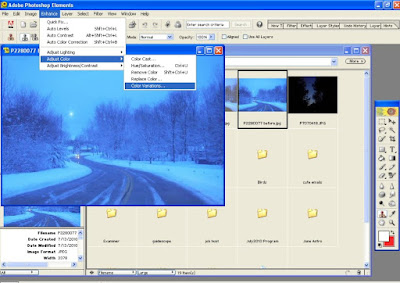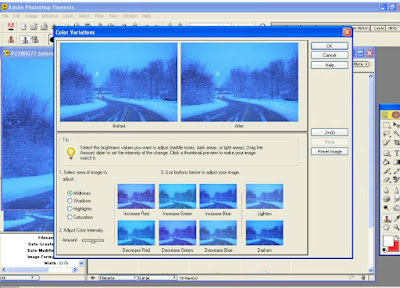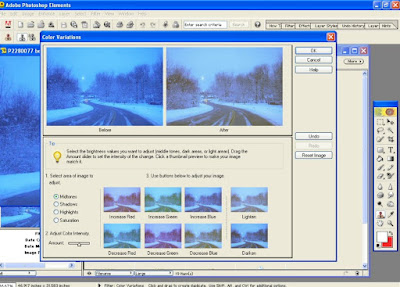Macro photography: extreme close-up shooting that one normally associates with
freakishly expensive SLR lenses,
fancy lighting rigs, and
tiny tripods. In the past, this was the only way to do macro. Today however, things could not be more different.
Many (all but the cheapest) point and shoot digital cameras of today offer a macro mode, which is normally represented by a flower icon. To make things better, most cameras have the macro on/off function as an external button! Yay! Buttons rule! In this macro mode, the camera plays with its lens focus mechanism to allow for super close focus that would be disabled in regular mode. With the ability to focus up close, often aggressive in-camera sharpening, and good light, today's point and shoot cams can make some jaw-dropping photos that will have people exclaiming (as they look at your camera) "you took that picture with that thing!?"
Yes, it can be this good.
With every fine detail mattering in macro photography, especially considering the pixel packed sensors of a P&S camera, good light is vital as it allows one to shoot at base (or near) ISO. At these low sensitivities (I'd avoid anything over 200), a P&S can produce an image that is every bit as good as a dSLR. Unfortunately, even on sunny days, one thing can hinder macro photography: you.
Yes, you are can be your own worst enemy when it comes to shooting macro with the ISO sensitive P&S camera. By having to get close to the subject, you will often block your own light, thus negating your ability to shoot at base ISO. Not good! Instead, if it is absolutely impossible to get out of the way and preserve your desired shooting angle, a small mirror or white piece of paper can be a real picture saver via reflecting light onto your subject once again. real plus of reflected light coming in from the side is that it can amplify any texture on the subject and provide nice contrasts.
Lighting situation conquered, it's time for focus.
P&S cameras focus for macro in two ways: close and then out and out and then in. Generally, the first method is better for macro as the camera automatically focuses at minimum focus distance and then compensates out as needed. By going about focus in this manner, speed and accuracy are both generally better. However, if your camera must focus down from far away even in macro, don't be completely discouraged. Flowers aren't going anywhere nor are any other stationary objects. Bugs may run/fly away but, chances are, if they were easily spooked they wouldn't let you get so close as to think about macro photography in the first place! If you can get to within a foot of an insect, chances are, it's in no hurry to get put of the area.
Whichever way your camera works, getting accurate focus is the biggest challenge to macro photography. To aid in the focus, aim for places of high contrast, such as the edge of a flower petal. With two high contrast objects in the viewfinder, the camera is more likely to find focus correctly.
One last thing about focus, some cameras have an automatic focus for macro mode that doesn't even require you to press the shutter button! This can be a point of controversy. For people used to half pressing the button to focus, the self-operating AF can take some practice to get used to. The good news is that it will get the camera in focus almost instantly due to its continual operation.
The two big hurdles, light and focus addressed, it's pretty much just point and shoot from here as many of today's P&S cameras don't allow for much manual anything anymore. If you are lucky and your camera does allow for manual control, feel free to start playing around with things in your house/yard so that you know what's best when you're out and about. Either way, macro photography with a little pocket P&S can be a lot of fun and rather rewarding once you upload the images to your computer.
Below are a series of images that were all taken with a point and shoot cameras, the Nikon Coolpix s550 and
Olympus Stylus 550WP. I must say, while P&S cameras are not my normal cup of tea , this these can be a lot of fun for close-up on the go!
Note: images are resized full shots while second are extremely huge crops. Note where I pulled the crop from against the real picture for scale. Not cropped so heavily, most ofthese photos would make great 8x10" prints.
Postage Stamp

 Dollar Bill
Dollar Bill

 Mayfly (aka Canadian Soldier in Northern Ohio)
Mayfly (aka Canadian Soldier in Northern Ohio)

 Model Car, ('66 Olds 442)
Model Car, ('66 Olds 442)

 An annoying insect
An annoying insect

 Flower up close
Flower up close

 Compact Flash Memory Card
Compact Flash Memory Card


Flower (seriously, I wish I'd wrote down what they were)

 #2 Pencil
#2 Pencil

 Hey, be different! Do macro with your P&S!
Hey, be different! Do macro with your P&S!

 Panasonic's new 3D lens
Panasonic's new 3D lens










 First, opening Elements, go to "enhance" and then to "adjust color." From there, another bar opens to the side, choose "color variations."
First, opening Elements, go to "enhance" and then to "adjust color." From there, another bar opens to the side, choose "color variations." A new window pops up, with the ability to increase/decrease red, green, blue, and brightness.
A new window pops up, with the ability to increase/decrease red, green, blue, and brightness.  Next (the important part), you adjust your colors. In Elements, this is done with a side-by-side before and after preview screen. Start clicking colors to see your picture change in real time. To fix the white balance, click to reduce blue and add red. Depending on the severity of your incorrect color cast, you may need to reduce blue multiple times. Once you're satisfied with the image, save it.
Next (the important part), you adjust your colors. In Elements, this is done with a side-by-side before and after preview screen. Start clicking colors to see your picture change in real time. To fix the white balance, click to reduce blue and add red. Depending on the severity of your incorrect color cast, you may need to reduce blue multiple times. Once you're satisfied with the image, save it.  Done, what a difference a few clicks make! (yes, this was a blue morning
Done, what a difference a few clicks make! (yes, this was a blue morning 
































